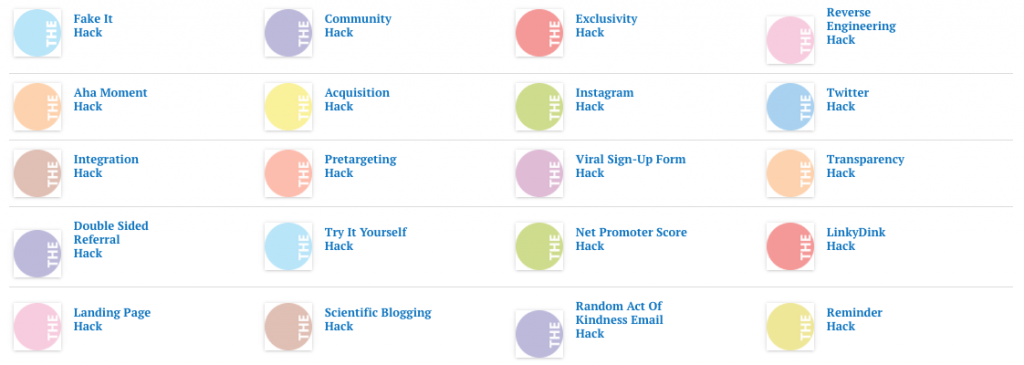
There are several ways to become an influential person on social media. There are many influencer management services. Tapfiliate, Sideqik (Neal), Upfluence and Sideqik are some of the most recognizable. Here are some advantages and disadvantages of each. It is important to first understand the difference between the types of influencers. The following are factors will help you choose the best social influencer manager.
Upfluence can be described as a manager of social media influencers
Upfluence is a social media influencer management platform that can be used by enterprises to track and manage the most important influencers. Upfluence provides insight into the profiles and social networks that influencers use. It helps brands find and hire influencers, approve their content, and track campaign metrics. It even allows you to manage multiple campaigns simultaneously. You can optimize your strategy by monitoring the influencers' activities in real time.
Upfluence has more than 3,000,000 influencers from 250 industries. Users can search for influential people by type of social network, location, engagement rates, traffic history, and more. They can also see the latest blog posts by the influencers. They also provide a phone number and email contact option. There are offices in France and the USA. The plan you choose will depend on your specific needs.
Sideqik is a social media influencer manager
Sideqik, a tool to help you manage social media influencers, is something you have probably come across. This tool analyzes social media activity and campaigns to help marketers build an audience by identifying new influencers and increasing their exposure. You can track ROI, web traffic, coupon redemptions and other metrics to help you plan your influencer marketing campaigns. Sideqik can help marketers understand what it has to offer.

Sideqik was started by Jeremy Haile. He has been involved in the management of social media for most his professional life. He was previously the lead in the development of Vitrue's social community management software. He realized the importance of relationships with influencers during this time and co-founded Sideqik along with Tree McGlown. Sideqik is an online marketing platform that assists marketers in finding influencers, activating campaigns, and measuring engagement and ROI.
Tapfiliate, a manager of social media influencers, is available.
If you're looking for a way to track your influencer marketing efforts, you've probably come across Tapfiliate, a social media influencer manager that can help you launch and manage affiliate campaigns. Tapfiliate is simple to use. Tapfiliate can be copied and pasted into your website. The software tracks sales and leads generated by your influencers. It also offers detailed reporting and insights into your influencer marketing efforts.
Influencer marketing is an excellent way to generate more exposure and clicks. You can also find social media influencers that are interested in your product. Tapfiliate works with thousands upon thousands of influencers via social media. You can sign up for a free 14 day trial to test it out. Enjoy a 14-day no-risk trial and get access to its tools to manage influencers.
Neal manages social media influencers
You are a social media manager and have the unique ability to build a positive brand image. Your overall marketing strategy will be based on your brand image. Neal's services are here to help. He's an expert in digital transformation and has authored four books. Neal shares his experiences and tips on using social media influencers for your benefit in this interview.

Before you even consider hiring an influencer, make sure you ask the right questions. It is important to verify that the influencer you are considering hiring has the right credentials. It's hard to distinguish fake accounts online from real ones, but you can ask questions to identify if the influencer is genuine. He also suggests that you avoid taking things at face value and only work with influencers who deliver results.
FAQ
What are the different content strategies?
Content strategy is a term that encompasses all aspects of the creation, management, distribution, measurement, optimization, and evaluation of content for digital channels. It encompasses more than what you post on social networks like Facebook and Twitter. It also includes what content you select to highlight on your blog, website, and other online properties.
Content strategy is important because it defines how you decide where you focus your time and effort, which content types you should use, and what type of messages you send to your audiences.
It is about understanding how content fits within the overall business goals to help you achieve them.
Do I need an agency to do Content Marketing?
No! It is possible to create high-quality content online with a variety of tools. Agency services are often expensive.
What amount should I spend on content marketing?
It all depends on how many leads are you looking to generate. Depending upon the industry, the average cost for a lead can range from $5 to $10. As an example, 20 dollars per lead was the cost of our first business. Today, we spend an average of $6-7 per lead.
Do you need a large budget to do content marketing?
It all depends on the size and stage of your business. Many small businesses start out without dedicated resources. However, as they grow, they discover that a solid strategy for content marketing will help increase sales and improve customer interaction.
You'll have access to a variety of tools and expertise when you work with a freelance writer or content marketing agency. These professionals will help you to identify and address problems in your company so that you can develop your content marketing strategy.
A well-designed content marketing strategy can help you make enough money to cover production expenses and allow you to invest in other aspects of your business.
Statistics
- Out of the 1,500 marketers we surveyed for our State of Content Marketing report, 78% who felt their content marketing strategy was exceptionally effective in 2021 had documented their strategy. (semrush.com)
- According to our research, 65% of companies with very successful content marketing in 2021 ran content audits at least twice a year. (semrush.com)
- Progress indicators (0–100%) allow each team member to see how attainable each goal is and understand what remains to be accomplished. (semrush.com)
- Companies that use content marketing see approximately 30% higher growth rates than businesses not using it. (mailchimp.com)
- This marketing strategy landed Ford a 15.4% conversion rate. (neilpatel.com)
- According to the Content Marketing Institute, 70% of B2B marketers and 86% of B2C marketers surveyed use content marketing in some form or other. (criteo.com)
- To further show the importance of this, 89% of people have stopped doing business with a company because of a poor experience. (neilpatel.com)
- An example of an overarching goal could be: "In 2022, we want to achieve a 20% increase in revenue created by organic content and generate 15,000 MQLs with a budget of $30,000." (semrush.com)
External Links
How To
Infographic Creation Tips for Content Marketing
Infographics are one of the most effective ways to explain complex concepts simply, making information easy to understand. Content marketing aims to provide useful and valuable information to your target audience, so you should consider using infographics to help spread this message.
For creating an infographic you'll need software such as Adobe Illustrator and Photoshop. These programs allow you to create infographics by drawing different shapes and elements. You can then use colors and fonts for your data. Once you have your design ready, upload images from Unsplash or Pixabay to add to it.
You can find inspiration for your own ideas by looking at existing infographics online. For example, if you want to show how many calories are in certain foods, you could take a picture of a food pyramid and replace the numbers with pictures of those foods. You might also want to calculate how many calories are in soda pop. This can be done by taking a picture with a bottle of Coke.
Once you've created your infographic, share it on social media channels like Facebook or Twitter. This helps people who aren't familiar with the concept learn about it. Include hashtags if you plan to share your infographic via social media platforms. This will allow others to see what you're talking. Hashtags allow users to follow along with conversations surrounding specific topics.
Make your infographics shorter than normal if you are creating them. An average blog post will be between 2000 and 5000 words. An infographic, however, only needs 500 to 1000 words. That means you can get more information across in less space.
When designing your infographic, remember that some viewers may struggle to read small font sizes. Use large fonts, but don't overuse color in your infographics. Make sure all text is legible.
Here are some more tips
-
Use an infographic template. You can find many templates online or in printed formats. Canva and Piktochart are some of the most popular.
-
Make your Infographic. Create your infographic using the template. You can use whatever media is most appropriate for your audience. In this example, photos of Seattle restaurants might be used to create an infographic about Seattle's best restaurants.
-
Add text. After creating your infographic, add text with Microsoft Word, PowerPoint, and Canva.
-
Add Images. Your infographic can also include images. These can be pictures, charts, graphs, or icons. If you want to add a picture, make sure it's relevant to your topic.
-
Make It Interactive. You can also add interactive elements such buttons, maps, links, and other features. This will make it easier for your audience to interact with you.
-
Share. Share the infographic once you're done.
-
Measure. What was the performance of your infographic? Are people clicking through to your website or not? Did they sign up for your email list? Was your infographic received well by them?
-
Improve. Do you think there are ways to improve your infographics Is there anything you could do better?
-
Repeat. Repeat.